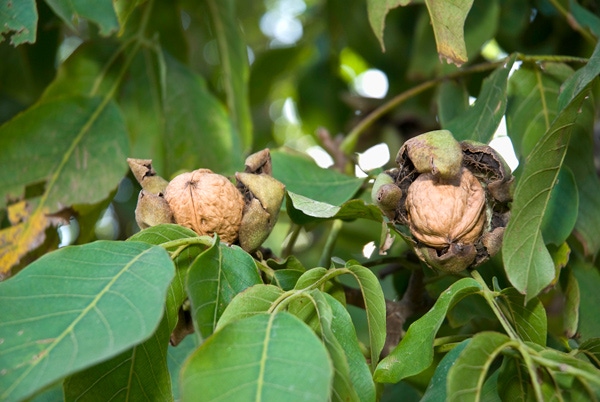
California walnut growers can expect to see new varieties developed to meet a host of production challenges over the next 30 years.
Pat J. Brown, of the University of California, Davis Plant Sciences Department and new leader of the walnut breeding program, says he will be using walnut DNA to determine which crosses will advance in the program’s breeding trials.
UC Davis has the only university walnut breeding program in California, and was the first to sequence the genome of a commercial walnut variety. This genetic information can be used to accelerate the rate of breeding and variety improvements, including pest and disease resistance.
Brown, who took the reins of the walnut breeding program in July 2017, spoke at the 49th annual Tri-County Walnut Day at Visalia.
IMPROVED CHANDLER VARIETY
The program’s latest contribution to California walnut production, an improved Chandler variety, may be released for commercial propagation this year. Brown says the yet-unnamed variety, 03-001-2357, has the same good characteristics of Chandler, but harvest date is 10 days earlier. It is also a good pollinizer for Chandler.
The focus on the varieties in the trial pipeline has been a wider range of harvest dates, crop yields, and color, he says.
Using DNA information from the potential breeding selections to determine walnut traits will make the process more efficient. Goals for the breeding program include increasing the rate of genetic gain, identifying breeding lines that can adapt to new and future threats, and adding desired traits.
It is also the role of the breeding program to figure out a genetic angle for moving in resistance traits, Brown says. In the future, there may be a need for trees that require fewer hours of winter chill. Earlier-leafing walnut varieties have less of a chill requirement than later varieties.
The use of DNA information could help most in the first stage of the breeding process, he says. Instead of planting high numbers in the seedling blocks and then weeding out the undesirable crosses, they can be identified earlier. A smaller percentage of new crosses would go to selection blocks, then on to grower trials. The program’s task for the next 15 years will be predicting traits based on DNA information.
GENOME SEQUENCING
Genotyping thousands of nuts per year must be cost-effective Brown says. The Illumina Hiseq 4000 sequencer at the UC Davis Genome Center can genotype one individual at $1,200, or 1,200 individuals at $1 per sample.
As an example, genotyping can predict if a prospective walnut variety will be lateral bearing or terminal bearing. One spot on chromosome 11 controls lateral bearing, which is a major predictable yield component, Brown says. In a few weeks, the program will start choosing nuts based on their chromosome 11 marker.
Work to make controlled crosses is also a significant challenge to progress in walnut breeding, he says. Use of open-pollinated nuts, and then DNA testing for parentage, can make selection easier.
Another role of the breeding program is to figure out the genetic angle for moving in resistance traits. The 2017 crosses have emphasis on Earliest, Cheinovo, and Pl159568 as a source of resistance to blight, Botryosphaeria, and husk fly. They are also determining if the lateral bearing property of Earliest can be predicted even if it has not been used previously in crosses.
Most of the walnut breeding work has been done with scions, but Brown says he also wants to integrate the process and make crosses for both scions and rootstocks.
About the Author(s)
You May Also Like




